In the ever-evolving world of culinary appliances, contact grills have emerged as a favorite among both professional chefs and home cooks alike. These versatile cooking tools offer a unique way to achieve that perfect sear and smoky flavor that’s hard to replicate with other cooking methods. But behind the sleek designs and efficient performance of these grills lies the intricate work of Original Equipment Manufacturers (OEMs). Let’s delve into the world of contact grill OEMs and explore the pivotal role they play in shaping the industry.
Introduction to Contact Grill OEMs
Contact Grill OEMs have become an integral part of the barbecue and outdoor cooking industry, offering a unique blend of expertise and customization to meet the diverse needs of consumers worldwide. These Original Equipment Manufacturers (OEMs) specialize in the design, production, and supply of contact grills, which are popular for their even heating capabilities and ease of use. In this detailed exploration, we delve into the world of contact grill OEMs, shedding light on their significance, the services they provide, and how they contribute to the dynamic market landscape.
The evolution of contact grills has been marked by continuous innovation, and OEMs play a pivotal role in driving this progress. These manufacturers work closely with brands to develop cutting-edge appliances that not only enhance the cooking experience but also cater to the ever-changing preferences of consumers. From compact portable grills to large commercial models, the range of products offered by contact grill OEMs is vast and varied.
One of the primary advantages of partnering with a contact grill OEM is the ability to offer a tailored product line. OEMs have the expertise to customize designs, materials, and features based on the brand’s vision and market demands. This level of flexibility allows manufacturers to differentiate their products in a crowded market, ensuring they stand out and appeal to specific consumer segments.
In the realm of contact grill OEMs, quality is paramount. These manufacturers adhere to stringent quality control measures throughout the production process to ensure that every grill meets the highest standards. From the selection of durable materials to the precision engineering of components, every aspect of the manufacturing process is meticulously managed to deliver a reliable and long-lasting product.
The journey of a contact grill from concept to completion is a testament to the meticulous attention to detail that OEMs bring to the table. It begins with market research and trend analysis, which helps OEMs identify emerging consumer needs and preferences. This information is then used to guide the design phase, where engineers and product developers collaborate to create innovative grill designs.
Once the design is finalized, the manufacturing process kicks off. This involves the sourcing of high-quality materials, such as stainless steel for the grill plates and corrosion-resistant materials for the housing. The precision of the manufacturing equipment and the skill of the workforce are crucial in ensuring that each grill is assembled to the highest standards.
Another key aspect of working with a contact grill OEM is the integration of technology. Many OEMs are at the forefront of incorporating smart features into their grills, such as digital temperature controls and wireless connectivity. These advancements not only enhance the cooking experience but also provide users with greater convenience and control over their grilling sessions.
Customization is not just limited to design and technology; it also extends to branding. OEMs can work with brands to integrate their logos and branding elements seamlessly into the grill’s design, creating a cohesive and professional appearance. This level of personalization is a powerful tool for brands looking to establish a strong brand identity and connect with their target audience.
In addition to product development and manufacturing, contact grill OEMs often offer a range of value-added services. This includes after-sales support, technical assistance, and even the option to develop accessories and complementary products that can enhance the overall user experience. These services help to build a strong, lasting relationship between the OEM and the brand.
The global reach of contact grill OEMs is impressive. With manufacturing facilities strategically located around the world, these companies can cater to markets on every continent. This global presence allows OEMs to leverage local expertise and resources, ensuring that their products are not only of the highest quality but also adapted to the specific requirements of each market.
In conclusion, the world of contact grill OEMs is a complex and dynamic industry that requires a combination of technical expertise, innovation, and customer focus. By working with these manufacturers, brands can bring to market high-quality, innovative contact grills that meet the needs of consumers worldwide. The partnership between OEMs and brands is a symbiotic relationship that drives the continuous evolution of the contact grill market, making it an exciting space to watch for the future.
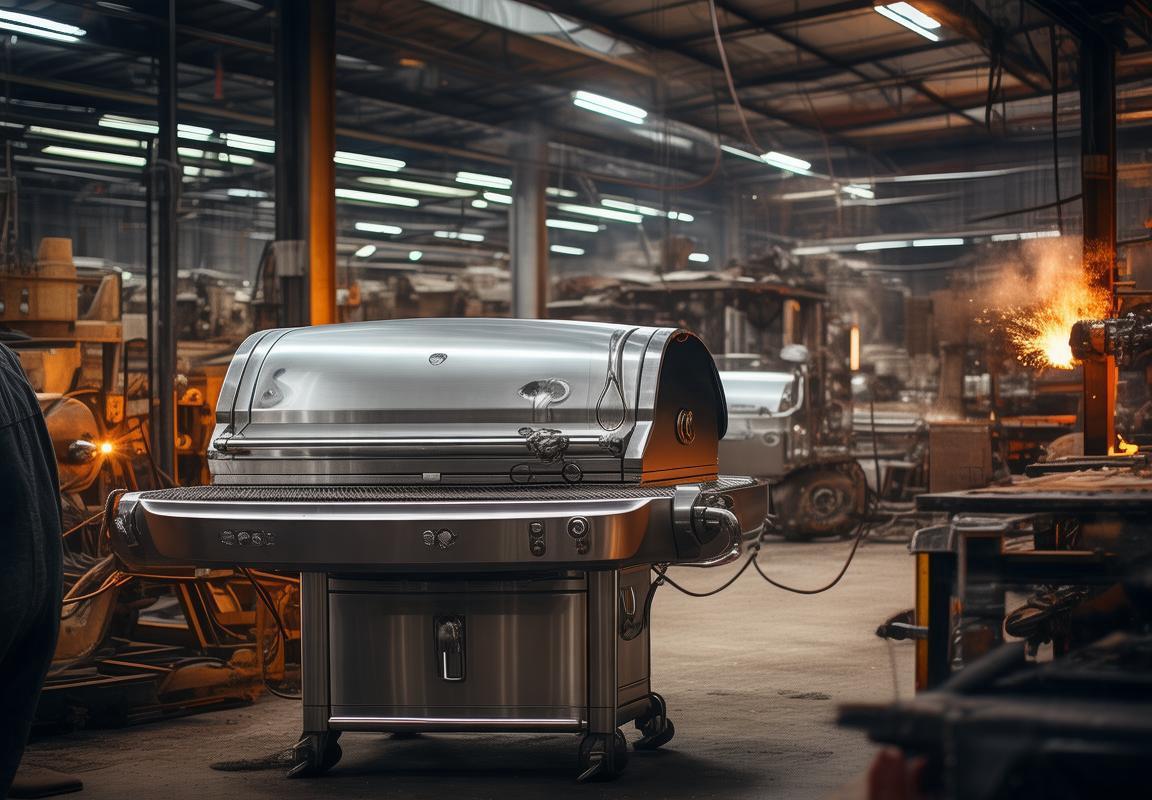
Understanding Contact Grills
Contact grills have become a staple in many kitchens around the world, offering a unique cooking experience that combines the convenience of an electric grill with the versatility of a stovetop cooking method. These grills are designed to mimic the traditional grilling process, allowing for that classic charred flavor and grill marks on meats, vegetables, and even sandwiches.
The contact grill’s design is what sets it apart. It consists of two flat, heating plates that press against the food as it cooks, ensuring even heat distribution and preventing flare-ups. This pressing action not only locks in the flavors but also helps to keep the food juicy and tender. The heating elements are typically ceramic or stainless steel, chosen for their durability and ability to maintain consistent temperatures.
One of the standout features of contact grills is their ability to cook a variety of foods. Whether you’re grilling steaks, burgers, or even delicate fish fillets, these grills can handle it all. The even cooking surface means that you get a nice sear on the outside while the inside stays tender and juicy. This is particularly beneficial for those who enjoy the taste of grilled food but prefer not to stand over a hot grill for extended periods.
The compact size of contact grills is another appealing aspect. They are designed to be space-saving, making them perfect for small kitchens or for those who prefer to cook on the countertop. Despite their small footprint, they are surprisingly powerful, often equipped with adjustable temperature controls that allow you to tailor the cooking process to your specific needs.
In terms of ease of use, contact grills are a breeze. Many models come with non-stick surfaces, which make cleanup a cinch. The plates are also removable, which means you can easily clean them in the dishwasher. Some models even have drip trays to catch any excess fat or juices, which not only makes for a cleaner cooking environment but also helps to prevent flare-ups.
Safety is a top priority in the design of contact grills. With their sealed cooking surfaces, these grills prevent any grease or food particles from escaping, reducing the risk of smoke or fire. Additionally, many models come with safety features like automatic shut-off timers, which turn off the grill if it’s left unattended for too long, thus preventing overheating.
One of the most unique aspects of contact grills is their versatility when it comes to cooking methods. While they are primarily known for grilling, many models can also be used for other cooking techniques. Some can act as a panini press, sealing and cooking sandwiches to perfection. Others can switch to a sautéing mode, allowing you to cook vegetables or meats without the need for a separate pan. Some even have a broiling function, which is great for cooking foods like chicken or fish that require a higher heat setting.
The technology behind contact grills has also evolved. Modern models often come with features like LED temperature displays, which provide precise control over the cooking process. Some even have digital controls that allow you to set specific temperatures and cooking times, making it easy to achieve restaurant-quality results at home.
When it comes to the variety of contact grills available on the market, there’s something for everyone. From budget-friendly models that offer the basics to high-end units with all the bells and whistles, there’s a wide range of options to choose from. Some are designed with sleek, modern aesthetics, while others are more traditional in style, offering a nod to the classic grilling experience.
In conclusion, contact grills are a fantastic tool for any home chef looking to replicate the taste of outdoor grilling indoors. Their compact size, ease of use, and versatility make them a popular choice for those who want to enjoy grilled flavors without the hassle of a traditional grill. From the novice cook to the seasoned grill master, a contact grill can enhance your culinary adventures, bringing the joy of grilling into the comfort of your own kitchen.
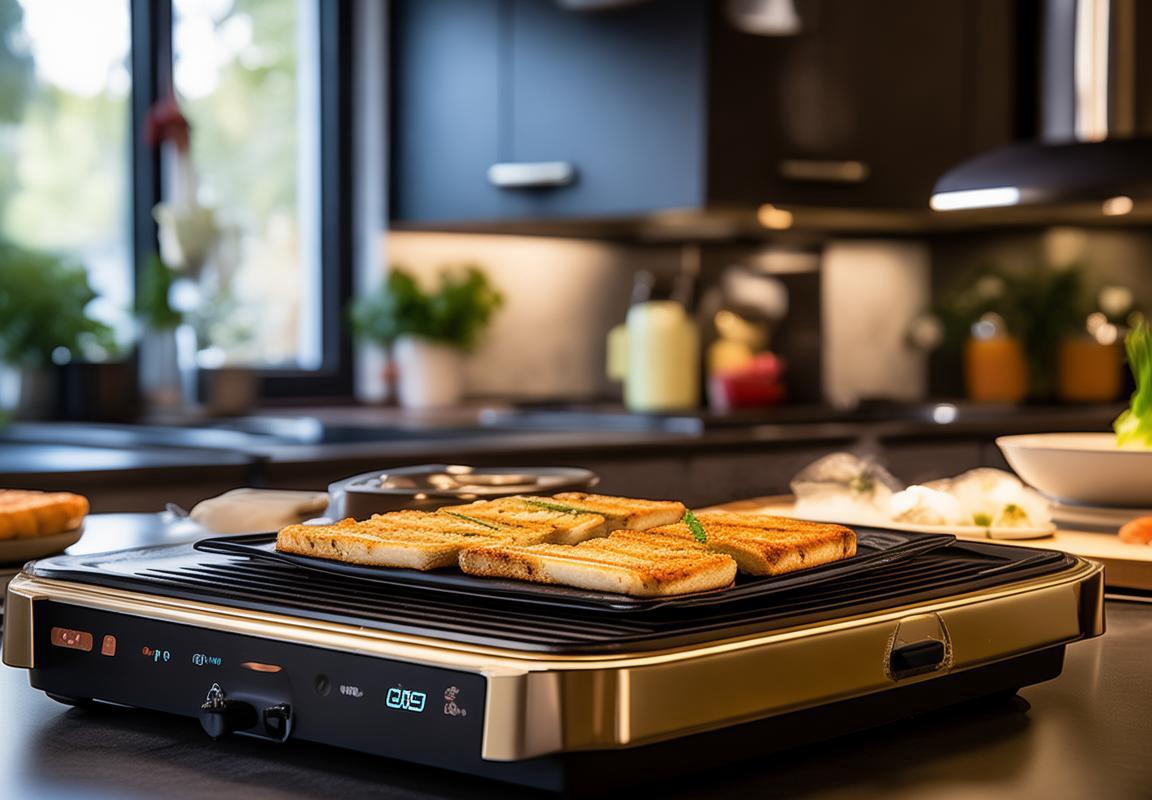
The Role of OEMs in Contact Grill Production
In the realm of kitchen appliances, contact grills have emerged as a favorite for their ability to sear, brown, and lock in flavors. But what’s the role of Original Equipment Manufacturers (OEMs) in this dynamic production process? Let’s delve into how OEMs contribute to the contact grill landscape.
OEMs act as the backbone of the contact grill manufacturing process, providing the necessary expertise and resources to bring innovative designs to life. They specialize in the design, development, and production of custom appliances, which means they play a pivotal role in shaping the market.
One of the primary functions of OEMs is to understand the latest trends and consumer demands. By staying ahead of the curve, they can design contact grills that not only meet but exceed customer expectations. This involves a deep understanding of materials, technologies, and the latest cooking techniques.
Design and Engineering ExpertiseOEMs bring a wealth of design and engineering knowledge to the table. They work closely with in-house or external design teams to create contact grills that are not only aesthetically pleasing but also functional and durable. This includes selecting the right materials, determining the optimal grill plate design, and ensuring that the appliance is user-friendly.
Customization and FlexibilityOne of the key strengths of working with an OEM is the ability to customize. Whether it’s a specific size, a unique feature, or a particular finish, OEMs can tailor the contact grill to the client’s needs. This flexibility allows brands to differentiate their products in a crowded market, offering customers a choice that sets them apart.
Quality Control and ComplianceQuality is non-negotiable in the appliance industry, and OEMs take this seriously. They implement rigorous quality control measures throughout the production process to ensure that each contact grill meets the highest standards. This includes compliance with safety regulations, electrical standards, and environmental requirements.
Supply Chain ManagementOEMs have established relationships with suppliers and manufacturers around the world, which means they can source parts and materials efficiently and cost-effectively. This supply chain expertise ensures that production runs smoothly, with timely delivery and minimal disruptions.
Innovation and Research and DevelopmentThe landscape of contact grills is constantly evolving, and OEMs are at the forefront of innovation. They invest in Research and Development (R&D) to explore new materials, cooking technologies, and user experiences. This commitment to innovation ensures that OEMs can offer cutting-edge solutions that keep up with the changing demands of the market.
Cost-Effective ProductionOEMs are experts in optimizing production processes to reduce costs without compromising on quality. They leverage economies of scale, efficient manufacturing techniques, and advanced production technologies to deliver competitive pricing to their clients.
Sustainability and Environmental ResponsibilityIn an era where sustainability is a growing concern, OEMs are increasingly focusing on environmentally friendly practices. This includes using sustainable materials, reducing energy consumption during production, and ensuring that the final product is recyclable or biodegradable.
After-Sales Support and ServiceThe relationship between an OEM and a client doesn’t end once the product is manufactured. OEMs often provide comprehensive after-sales support, including service and maintenance programs. This ensures that the contact grill remains functional and reliable for years to come.
In conclusion, OEMs are instrumental in the production of contact grills. They offer a combination of design expertise, customization, quality control, supply chain management, innovation, cost-effectiveness, sustainability, and after-sales support. By working with an OEM, brands can confidently enter the market with a product that stands out for its quality, performance, and customer satisfaction.
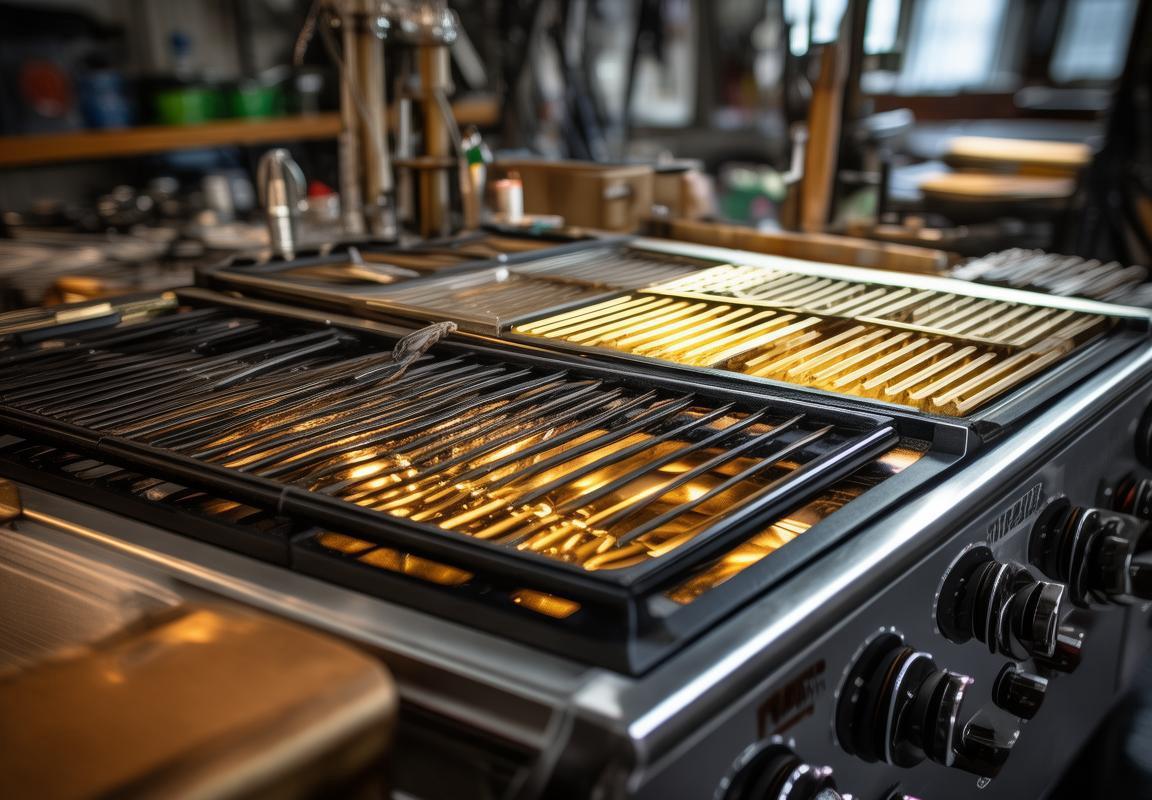
Key Benefits of Working with Contact Grill OEMs
Working with a Contact Grill OEM can offer numerous advantages that can transform the way you approach your business. From cost savings and efficiency to customization and innovation, here’s a closer look at some of the key benefits:
Efficiency in Production ProcessesOEMs are experts in the manufacturing process. By partnering with them, you can leverage their streamlined operations and years of experience to ensure your contact grill production runs smoothly. This efficiency can lead to reduced lead times, minimized waste, and improved overall productivity.
Cost-Effective SolutionsOne of the primary reasons businesses choose to work with OEMs is the cost-effectiveness. OEMs typically have economies of scale that allow them to purchase materials in bulk and operate their facilities at high capacities. This results in lower unit costs for your contact grill production, which can translate to significant savings for your business.
Expertise in Quality ControlQuality is paramount in the grill industry. OEMs adhere to stringent quality control standards and have the resources to implement rigorous testing procedures. By working with an OEM, you can be confident that your contact grills will meet the highest quality expectations, reducing the risk of product recalls and enhancing customer satisfaction.
Customization CapabilitiesWhether you’re looking to differentiate your brand or meet specific market demands, OEMs can provide customized solutions. They can modify existing grill designs or develop new ones from scratch, allowing you to tailor your product to fit your unique business goals and customer preferences.
Innovation and Technological AdvancementsThe grill industry is constantly evolving with new technologies and innovations. Working with an OEM ensures that you’re not just keeping up with the competition but are often a step ahead. OEMs stay abreast of industry trends and can integrate the latest features and materials into your product, enhancing its appeal and performance.
Global Supply Chain AccessOEMs often have a vast network of suppliers and manufacturing partners around the world. This gives you access to a diverse range of high-quality materials and components, as well as the ability to source from regions with competitive pricing and favorable trade agreements.
Scalability and FlexibilityAs your business grows, you need a partner that can scale with you. Contact Grill OEMs offer scalability, meaning they can adjust production to meet your expanding demands without compromising quality. This flexibility is crucial for businesses looking to expand into new markets or increase their product lines.
Rapid Prototyping and Design SupportDeveloping a new product can be a complex and time-consuming process. OEMs provide design support and rapid prototyping services, allowing you to bring your concepts to life quickly. This can help you test market acceptance and iterate on your design to ensure it meets customer needs.
Regulatory ComplianceNavigating the world of regulations can be daunting, especially for businesses that are new to the grill market. OEMs are well-versed in local and international standards, ensuring that your products comply with all relevant regulations, which can prevent legal issues and maintain your brand’s reputation.
Resource AllocationBy outsourcing production to an OEM, you can free up your internal resources. This means your team can focus on core business activities such as marketing, sales, and customer service, rather than being bogged down by manufacturing processes.
Risk MitigationThe manufacturing process is fraught with risks, from supply chain disruptions to quality control issues. When you work with an OEM, you transfer a significant portion of these risks to the manufacturer, who has the expertise and systems in place to manage them effectively.
Strategic PartnershipsCollaborating with an OEM can lead to the development of a strategic partnership that extends beyond just the manufacturing of contact grills. This can open up opportunities for co-branding, joint marketing, and shared research and development, creating a win-win situation for both parties.
Long-Term Cost SavingsWhile the initial cost of working with an OEM may seem higher, the long-term benefits often outweigh the initial investment. Through optimized production, reduced waste, and improved efficiency, OEMs can help you achieve significant cost savings over time.
By considering these benefits, it becomes clear why working with a Contact Grill OEM can be a strategic choice for businesses looking to enter or expand in the grill market. The expertise, cost savings, and opportunities for innovation make OEM partnerships a valuable asset in the competitive landscape of grill manufacturing.
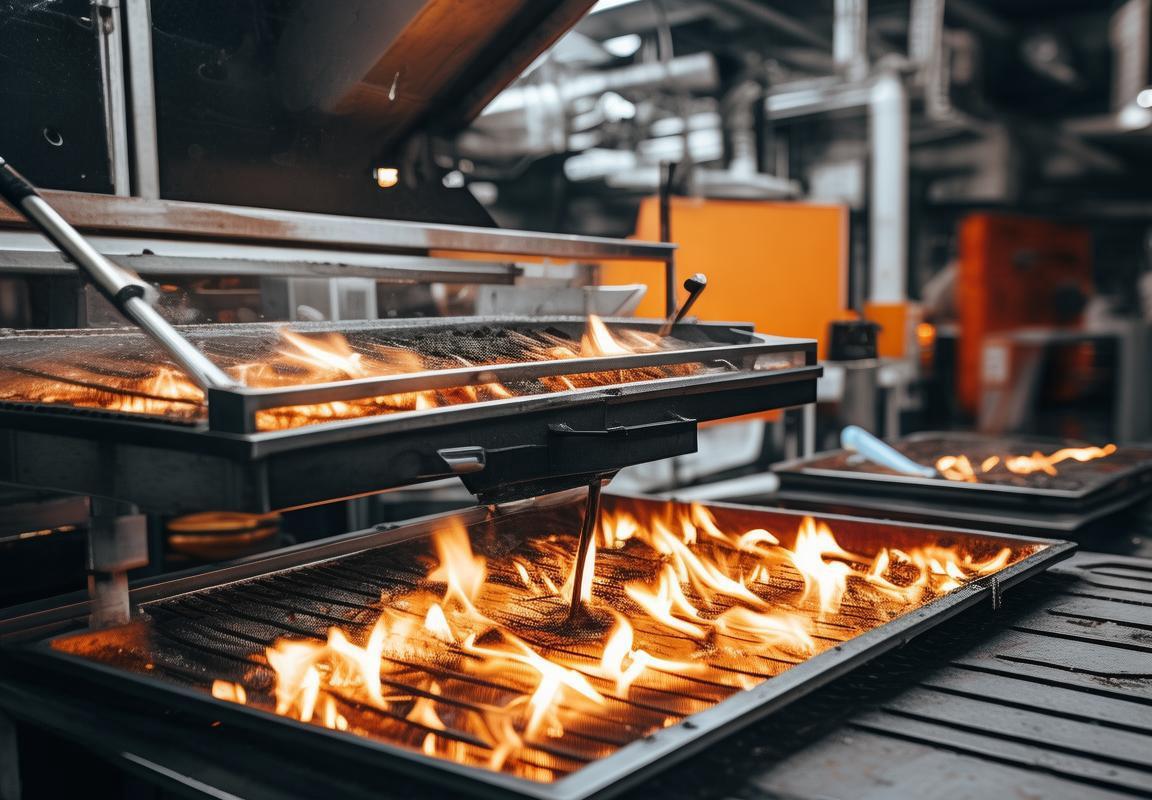
The OEM Development Process
In the world of contact grill production, the OEM (Original Equipment Manufacturer) development process is a complex yet rewarding journey. It involves a series of steps that transform an idea into a tangible product. Here’s an in-depth look at what this process entails:
The Conceptualization PhaseDuring this initial stage, the OEM collaborates closely with the client to understand their vision and requirements. This often involves brainstorming sessions, market research, and analyzing customer needs. The goal is to refine the concept into a product that not only meets the specifications but also stands out in the competitive market.
Design and PrototypingOnce the concept is solidified, the OEM’s design team steps in. They create detailed technical drawings and often produce a prototype to visualize the product. This prototype is a scaled-down version that allows for testing and refinement before moving to full-scale production. The design phase is crucial as it determines the functionality, aesthetics, and safety of the contact grill.
Material Selection and Quality AssuranceChoosing the right materials is pivotal in contact grill production. OEMs must consider factors like durability, heat conductivity, and safety. High-quality stainless steel, for example, is often used for its ability to withstand high temperatures and maintain its integrity. Throughout this process, quality assurance checks are conducted to ensure that all materials meet the required standards.
Engineering and ManufacturingWith the design and materials in place, the engineering phase begins. This involves the creation of tooling and molds, which are essential for mass production. The OEM’s engineering team ensures that the manufacturing process is efficient and cost-effective. They also work on optimizing the production line to minimize waste and maximize output.
Testing and IterationBefore the product hits the market, it must undergo rigorous testing. This includes functional testing to ensure the contact grill operates as intended, safety testing to comply with regulations, and durability testing to confirm the product’s longevity. If any issues arise, the OEM works on iterations to address these problems, often revisiting the design or engineering stages.
Certification and ComplianceContact grills must meet various safety and regulatory standards, such as those set by the FDA or equivalent bodies in different countries. The OEM is responsible for obtaining these certifications, which can be a lengthy process involving documentation, audits, and sometimes additional modifications to the product.
Pilot Production and FeedbackOnce the product passes all necessary tests and certifications, the OEM may initiate a pilot production run. This allows for a smaller batch of products to be manufactured and tested in real-world conditions. Feedback from this stage is crucial for making final adjustments before full-scale production begins.
Full-Scale ProductionWith all issues resolved and feedback incorporated, the OEM can move forward with full-scale production. This phase involves the mass manufacturing of contact grills, ensuring that each unit meets the same high standards as the pilot batch. Efficient production management is key to keeping costs down and meeting delivery schedules.
Packaging and DistributionOnce the contact grills are manufactured, they need to be packaged appropriately for shipping. The OEM works with packaging designers to create protective and visually appealing packaging. Distribution logistics then come into play, ensuring that the products reach the intended market efficiently and in optimal condition.
Post-Production SupportThe OEM’s involvement doesn’t end with the delivery of the product. Post-production support includes warranty services, customer support, and sometimes even product upgrades or repairs. This ongoing relationship with the client helps to build trust and ensures customer satisfaction.
In summary, the OEM development process is a multifaceted endeavor that requires precision, creativity, and a commitment to quality. From concept to completion, each step is designed to ensure that the final product not only meets the client’s expectations but also stands out in the marketplace.
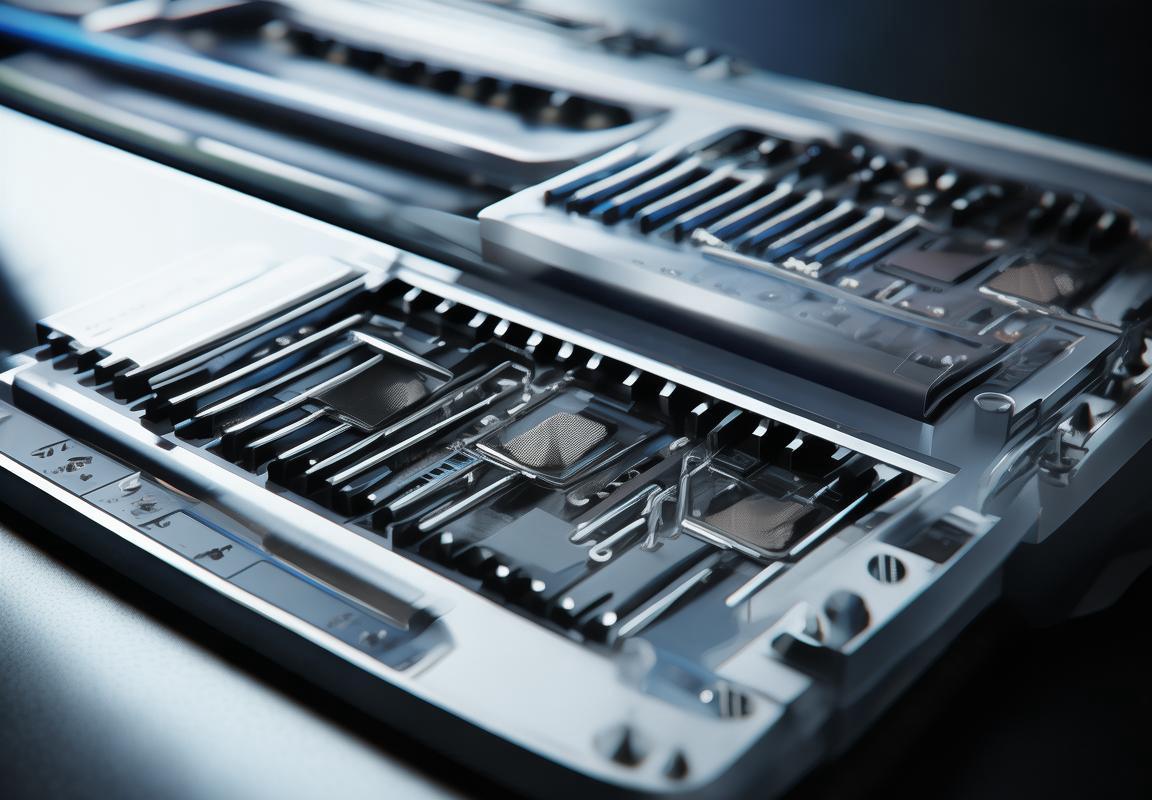
Customization and Innovation with OEMs
Navigating the culinary landscape, there’s a growing demand for specialized cooking appliances, and one such staple is the contact grill. These versatile cooking tools are not just limited to the commercial kitchen but have found their way into many homes. This is where Original Equipment Manufacturers (OEMs) play a pivotal role, offering a world of customization and innovation. Let’s delve into how OEMs can tailor their products to meet the unique needs of their clients.
OEMs are the architects of innovation, blending technology with the art of cooking. They start by understanding the market trends and the evolving preferences of consumers. With this knowledge, they can offer a range of contact grill models that cater to different segments, from professional chefs to home enthusiasts. Customization isn’t just about choosing a design; it’s about creating a product that perfectly aligns with the brand’s identity and the customer’s expectations.
The design phase is a collaborative effort, often involving engineers, designers, and the client’s team. It’s a process that starts with sketches and evolves into prototypes. OEMs are adept at translating these ideas into reality, using advanced manufacturing techniques to ensure the final product is not only aesthetically pleasing but also functional. From the type of grill plates to the size of the cooking surface, every detail is meticulously crafted to offer the best user experience.
One of the standout benefits of working with an OEM is the ability to integrate new technologies. Smart features like digital temperature control, programmable settings, and wireless connectivity are becoming the norm. These innovations not only enhance the cooking process but also provide a competitive edge in the market. OEMs have the expertise to seamlessly incorporate these features into the contact grill, making it a modern, user-friendly appliance.
Innovation isn’t just about adding new features; it’s also about improving existing ones. For instance, some OEMs are experimenting with non-stick coatings that are more durable and eco-friendly. They are also exploring materials that can withstand higher temperatures without warping, ensuring that the contact grill remains a reliable tool for years to come.
Customization extends beyond the technical aspects. OEMs understand that branding is crucial, and they can create contact grills that reflect the client’s brand ethos. This could mean incorporating specific colors, logos, or even unique shapes that make the product stand out on the shelves. The possibilities are endless, and it’s this level of personalization that can set a product apart from the competition.
Another area where OEMs excel is in adapting to specific market needs. For example, certain regions may have unique culinary traditions that require specialized grilling techniques. OEMs can work closely with clients to develop contact grills that cater to these specific requirements, whether it’s a different type of grill plate or a cooking surface that can handle a wider variety of foods.
Safety is a paramount concern in any cooking appliance, and OEMs take this seriously. They ensure that all contact grills meet the highest safety standards, including electrical, thermal, and structural integrity. This not only protects the end-user but also gives peace of mind to the client, knowing that their product is reliable and safe.
Furthermore, OEMs can offer a range of additional services that support the customization process. This includes market research to identify the best features and design elements, as well as testing and validation to ensure that the product performs as expected. They can also provide training and support to help the client’s team understand the product and its capabilities.
In the world of contact grill production, OEMs are the bridge between a client’s vision and the final product. They are the masterminds behind the scenes, ensuring that every detail is considered and every possibility explored. Whether it’s a simple design tweak or a groundbreaking new feature, OEMs are the ones who turn concepts into reality.
The process of working with an OEM is a journey of creativity and collaboration. It starts with an idea and ends with a product that not only meets but exceeds expectations. The OEM development process is not just about creating a contact grill; it’s about crafting a story, a narrative that reflects the brand’s commitment to quality, innovation, and customer satisfaction. From the initial consultation to the final delivery, OEMs are there every step of the way, guiding their clients through the complexities of product development to bring their vision to life.
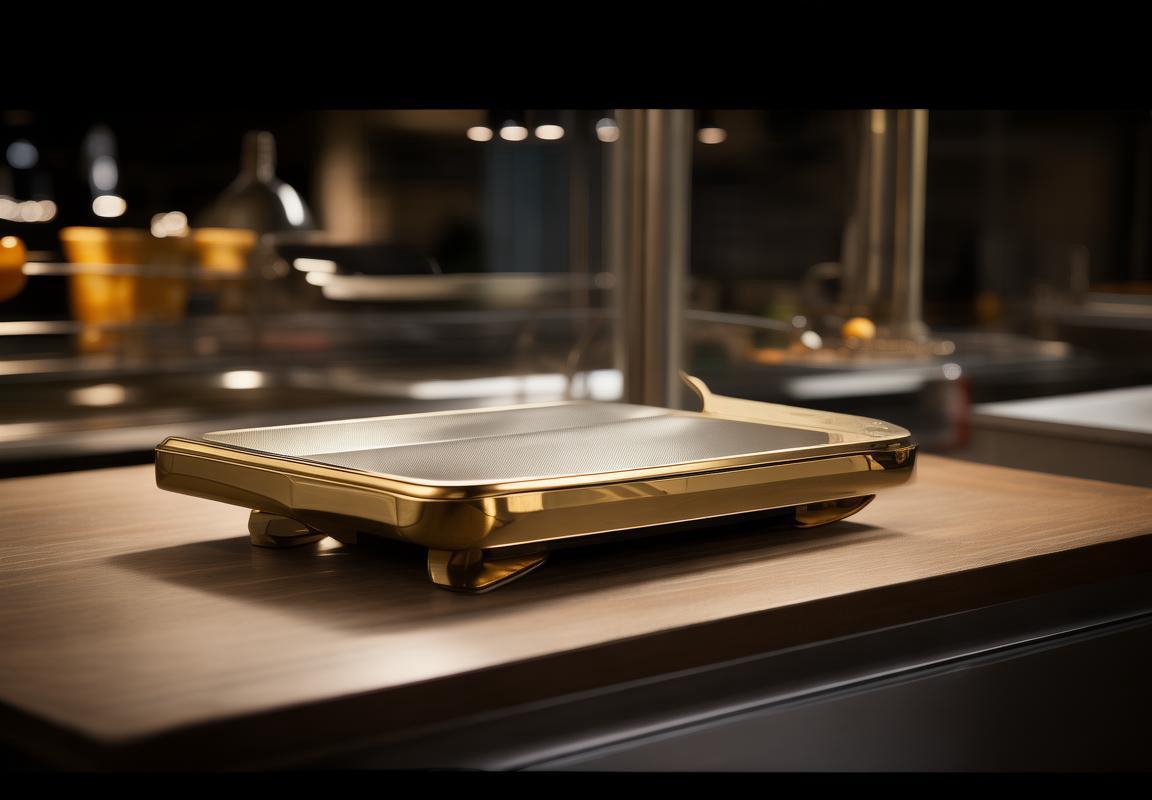
Quality Control and Standards
In the realm of contact grill production, maintaining stringent quality control and adhering to industry standards is not just a requirement—it’s a commitment to excellence. Here’s a closer look at how these elements shape the process:
The meticulous scrutiny of materials begins with the selection of high-quality components. OEMs invest in sourcing the finest metals, plastics, and other materials to ensure that the contact grills they produce are robust and durable.
Each part of the contact grill goes through a series of inspections. From the initial raw materials to the final assembly, every piece is checked for defects, ensuring that only the highest quality components make it into the final product.
The assembly line is a high-tech environment, where precision is paramount. Robots and skilled technicians work in tandem to put together the contact grills, with automated systems constantly monitoring the process for any deviations from the established standards.
Functionality testing is a critical phase in the quality control process. Grills are subjected to rigorous tests to ensure that they meet the performance expectations. This includes heat distribution tests, electrical safety checks, and durability assessments.
Safety is a non-negotiable factor in contact grill manufacturing. OEMs must comply with various safety regulations, such as those related to electrical currents, heat dissipation, and structural integrity. Regular safety audits and certifications are a part of the ongoing commitment to safety.
Environmental considerations are also integral to the quality control process. OEMs are increasingly focusing on sustainable practices, ensuring that their manufacturing processes minimize waste and reduce their carbon footprint.
Certifications from recognized bodies like UL, CE, and RoHS are a testament to the adherence to international standards. These certifications not only assure customers of the product’s quality but also open up new markets for the OEMs.
Innovation in quality control is ongoing. OEMs invest in new technologies and methodologies to improve the efficiency and effectiveness of their quality assurance processes.
Training programs for employees are essential to maintain a high standard of quality. Workers are educated on the latest manufacturing techniques and quality standards to ensure consistency in the production process.
Regular feedback from customers and end-users is invaluable in the quality control process. It provides OEMs with insights into how their products are performing in real-world scenarios and where improvements can be made.
The continuous improvement of products and processes is a hallmark of a quality-focused OEM. This culture of excellence ensures that every contact grill that leaves the factory floor meets the highest standards of quality and reliability.
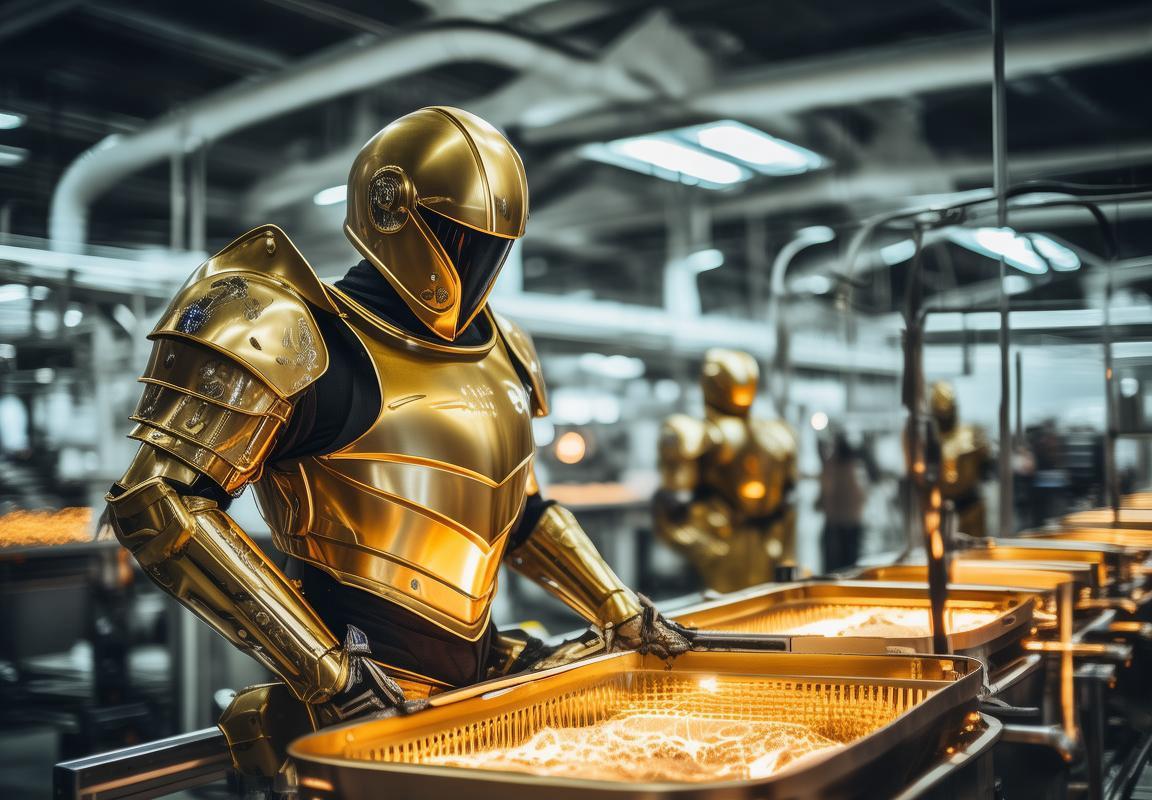
The Global Reach of Contact Grill OEMs
The world of contact grill OEMs (Original Equipment Manufacturers) has expanded significantly, offering brands and retailers a vast network to source high-quality grills from various corners of the globe. This global reach is a cornerstone of the OEM business model, and it brings several benefits that can be outlined as follows:
The diversity of suppliers spans from small, niche manufacturers to large-scale production facilities, each offering unique strengths and capabilities. This diversity allows for a wide range of designs, materials, and technologies to be integrated into the manufacturing process.
With a global presence, contact grill OEMs can tap into local markets, understanding the specific needs and preferences of consumers in different regions. This localization can lead to products that are better suited to the demands of local customers, whether it’s a preference for certain types of grilling or cultural differences in cooking styles.
The expansive network of OEMs also means that there’s a wealth of knowledge and experience to draw from. Collaborating with OEMs that have been operating in various markets for years can provide insights that might not be available to a brand that operates on a more localized scale.
International sourcing allows for more competitive pricing. OEMs can leverage economies of scale and efficient supply chains to offer cost-effective solutions without compromising on quality. This can be particularly advantageous for businesses looking to offer competitive pricing to attract a broader customer base.
OEMs often have established relationships with suppliers of raw materials, components, and technology worldwide. This not only ensures a steady supply of high-quality inputs but also provides access to the latest innovations in materials and design, allowing for continuous improvement and product evolution.
The global reach of contact grill OEMs also means that brands can expand into new markets with ease. Whether it’s entering a new country or targeting a specific demographic, the OEM’s existing infrastructure can facilitate the process, making it more straightforward and less risky.
OEMs can also help navigate the complexities of international trade. They are well-versed in the regulatory requirements, shipping logistics, and import/export processes that come with selling products across borders. This expertise can save brands considerable time and resources that would otherwise be spent on learning and adapting to these challenges.
Moreover, the global presence of OEMs often means a broader range of after-sales support. With offices and representatives scattered around the world, customers can receive local-language assistance, repairs, and service, enhancing customer satisfaction and loyalty.
In the realm of marketing and distribution, the global reach of contact grill OEMs can be a significant asset. OEMs often have a strong network of distributors and retailers, both online and offline, which can help brands reach a wider audience without the need to build such a network from scratch.
The environmental impact of manufacturing and distribution is a growing concern for many businesses. With a global presence, OEMs can optimize their supply chain to minimize their ecological footprint, using sustainable materials and practices wherever possible.
The global reach of contact grill OEMs also fosters an environment of competition. This competition can drive innovation as OEMs strive to offer better products, services, and pricing to stay ahead of the curve. For brands, this can mean access to the latest and greatest in contact grill technology.
In conclusion, the global reach of contact grill OEMs is a multifaceted advantage that encompasses cost-effectiveness, access to a wealth of expertise, product innovation, and a simplified entry into new markets. For any brand looking to thrive in the competitive world of contact grills, partnering with an OEM with a global network can be a strategic move that pays dividends in various ways.
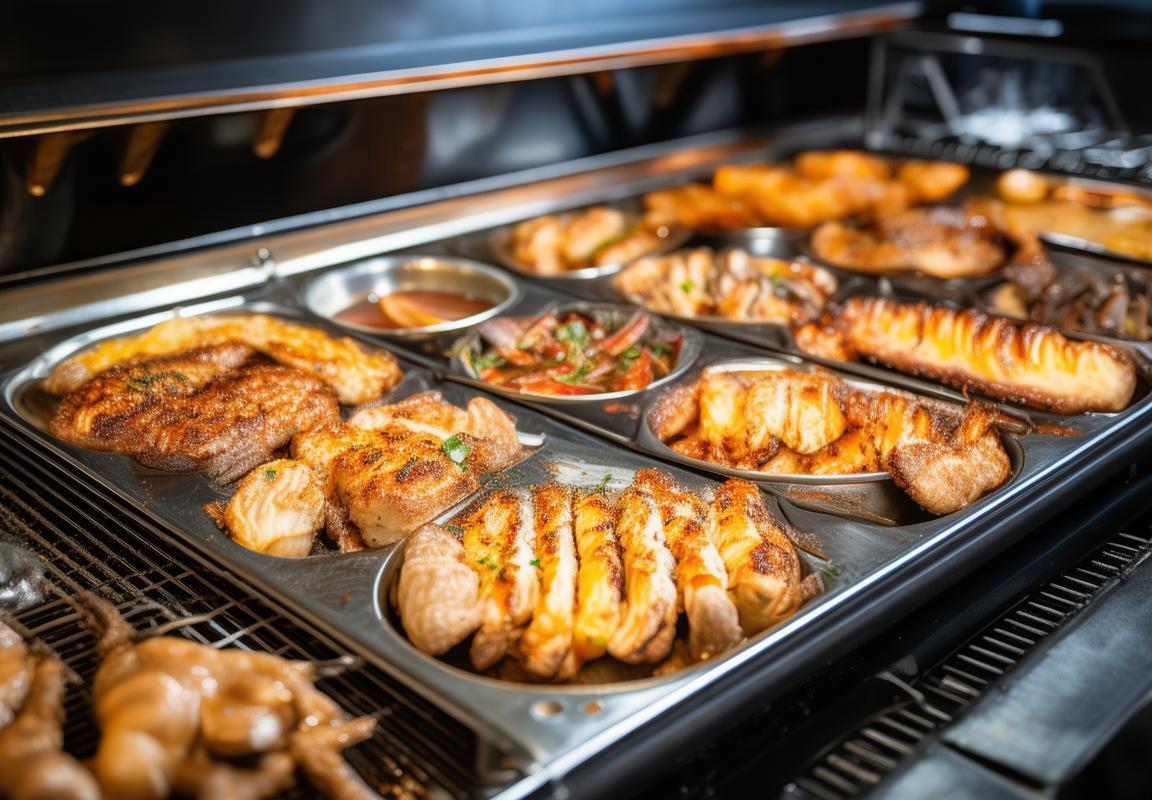
Case Studies: Success Stories with Contact Grill OEMs
In the realm of contact grill production, several success stories have emerged, showcasing the remarkable achievements of companies that have partnered with Original Equipment Manufacturers (OEMs). These stories highlight the benefits of working with OEMs, from cost savings and quality assurance to market expansion and innovation. Let’s delve into a few of these success tales.
One such story is that of a small, family-owned barbecue accessories brand that sought to expand its product line. The company, known for its high-quality grill tools and accessories, recognized the growing demand for contact grills and decided to enter the market. However, they lacked the resources and expertise to develop and manufacture a contact grill in-house.
Recognizing the potential for growth, the company approached a reputable contact grill OEM to collaborate on the project. The OEM, with years of experience in designing and producing contact grills, took the brand’s vision and turned it into a reality. They offered tailored solutions, from customizing the grill’s features to ensuring it met the highest quality standards.
The result was a beautifully crafted contact grill that perfectly aligned with the brand’s image and offered customers a unique and convenient grilling experience. The collaboration with the OEM allowed the brand to enter the contact grill market quickly and efficiently, leveraging the OEM’s knowledge and resources.
Another success story involves a large outdoor equipment retailer that wanted to diversify its product offerings and cater to the changing preferences of its customer base. The retailer approached a contact grill OEM to create a line of high-end, premium contact grills that would complement its existing product portfolio.
The OEM, known for its innovative designs and advanced technology, worked closely with the retailer to understand their needs and develop a product that would resonate with consumers. They incorporated state-of-the-art features, such as adjustable heat settings, non-stick surfaces, and advanced temperature control systems, ensuring that the grills would stand out in the competitive market.
The premium contact grill line was a resounding success, not only for the retailer but also for the OEM. The OEM’s expertise in manufacturing and innovation allowed the retailer to expand its market share and establish itself as a leader in the premium outdoor equipment market.
In another instance, a well-established kitchen appliance manufacturer sought to enter the contact grill market with a unique, eco-friendly approach. The company, committed to sustainability, approached an OEM to help them develop a contact grill that was both energy-efficient and made from recycled materials.
The OEM, with a strong track record in sustainable manufacturing, worked with the manufacturer to design a contact grill that met the environmental standards and performance expectations. They utilized innovative materials and energy-saving technologies, resulting in a product that not only appealed to eco-conscious consumers but also demonstrated the OEM’s versatility in addressing diverse market needs.
These success stories demonstrate the power of collaboration between contact grill OEMs and their clients. By partnering with OEMs, companies can tap into a wealth of experience, technical expertise, and resources that can help them bring innovative, high-quality products to market. Whether it’s a small brand looking to expand its product line, a retailer aiming to diversify its offerings, or a manufacturer seeking to enter a new market with a unique approach, OEMs play a pivotal role in turning these aspirations into reality.
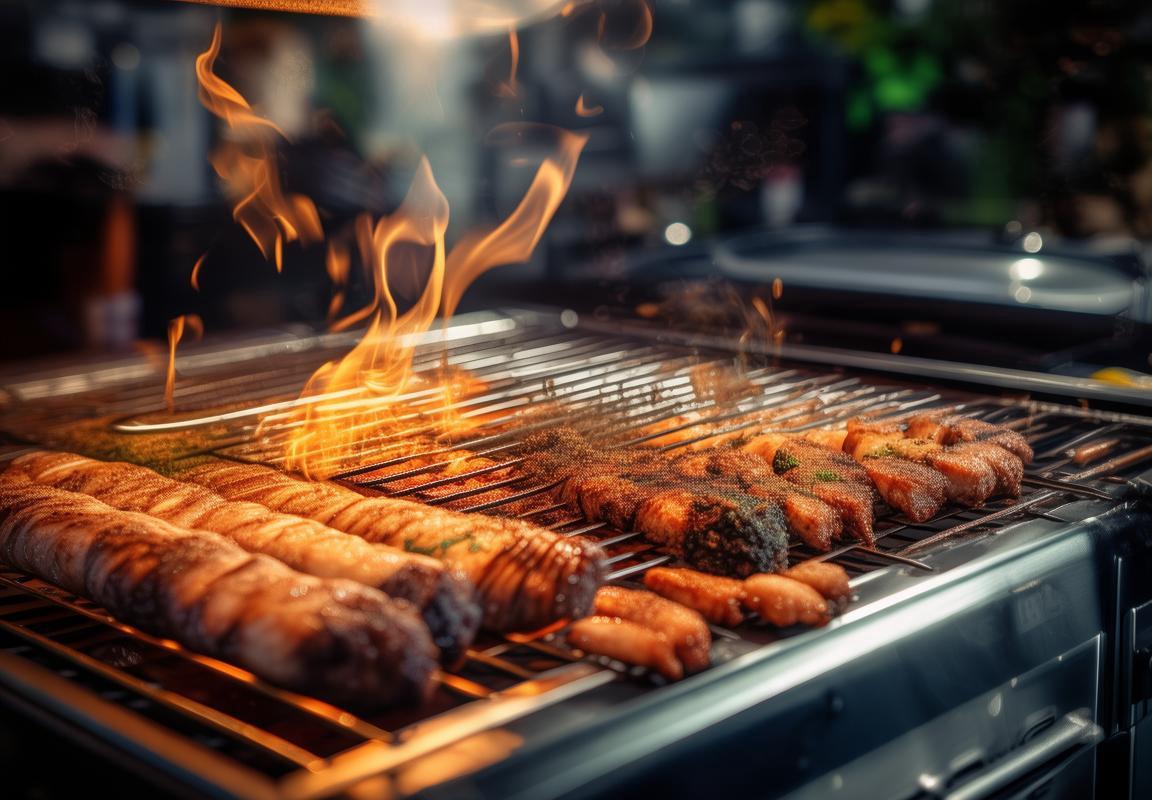
Conclusion
The partnership with a Contact Grill OEM can open doors to a world of possibilities. These manufacturers have become integral to the success of many brands, offering tailored solutions and cutting-edge innovation. Let’s delve into some case studies that showcase how these OEMs have turned visions into reality, propelling businesses forward.
In one instance, a small startup in the outdoor cooking equipment market wanted to break into the competitive market with a unique contact grill design. The team reached out to a reputable OEM, sharing their concept and hoping for a product that would stand out. The OEM not only crafted the grill to the startup’s specifications but also introduced advanced features that set their product apart. The result? A product that quickly gained traction, earning the startup a loyal customer base and industry recognition.
Another success story involves a well-established brand looking to expand its product line. They collaborated with a Contact Grill OEM to develop a premium model that catered to both professional chefs and home cooks seeking high-quality grilling experiences. The OEM leveraged their expertise to create a grill with superior heat distribution and durability, which the brand incorporated into their premium collection. The new model was a hit, boosting the brand’s reputation and sales.
A global appliance manufacturer faced a challenge when their contact grill product line was not meeting customer expectations due to inconsistent performance. Seeking a solution, they turned to an OEM with a strong track record in the industry. The OEM conducted a thorough analysis of the existing product and identified areas for improvement. They then reengineered the grill, focusing on better materials, design, and manufacturing processes. The outcome was a product that not only met but exceeded customer expectations, leading to increased sales and a satisfied client.
A small, family-owned business in the Midwest wanted to create a line of contact grills that would appeal to local farmers and food enthusiasts. They approached an OEM with a vision to design a grill that was both functional and reflective of their community’s values. The OEM worked closely with the family to develop a custom grill that featured eco-friendly materials and a design inspired by local agriculture. The final product became a symbol of pride in the community and a popular item in the business’s catalog.
In another case, a major retailer sought to expand their outdoor living department with a line of high-quality contact grills. They collaborated with an OEM that had a reputation for producing durable and efficient outdoor cooking equipment. The OEM helped the retailer source the right components, manage the supply chain, and ensure the grills were up to par with the retailer’s brand standards. The result was a successful product launch that enhanced the retailer’s reputation and customer satisfaction.
These success stories with Contact Grill OEMs demonstrate the power of collaboration and innovation. By leveraging the expertise of these manufacturers, businesses can bring their unique ideas to life, tap into new markets, and offer their customers exceptional products. The OEMs’ ability to customize, innovate, and maintain high-quality standards has become a cornerstone in the success of countless brands across the globe.